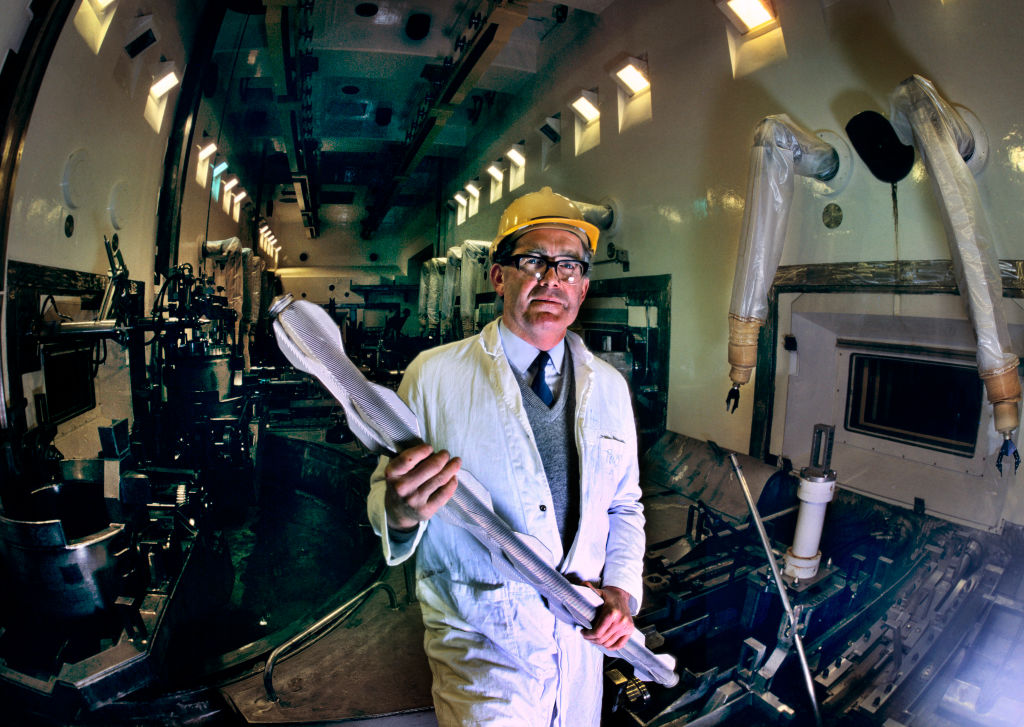What about Britain? Alas, there are more serious hurdles than the short-termism demonstrated by Clegg. Nuclear power has, after all, enjoyed plenty of backers here, among them Tony Blair, George Osborne and Boris Johnson. At last year’s election, it was endorsed in the manifestos of both main parties. No matter. All but one of the country’s existing reactors will be retired by the end of this decade. Somerset’s Hinkley Point C, started in 2016, was meant to be finished next year. Instead the government is still looking for investors to cover the mounting costs of the project, which is now due in 2031. And when the reactor does eventually start producing electricity, it won’t be cheap — likely double the current wholesale price. At the same time, Keir Starmer is also struggling to drum up private backing for a new reactor, Sizewell C in Suffolk. The site was declared suitable in 2009 but is still awaiting an investment decision.
More evidence, in other words, that Britain specialises in very expensive infrastructure, so long as it doesn’t have to be built efficiently or indeed even finished. Nuclear projects have suffered from the usual problems of government dithering and wrangling with private partners. Interminable planning complications hardly help either. EDF, the French state-owned energy company, grumbles that British planners have demanded over 7,000 modifications to its reactor at Hinkley Point C, even though the design is already operational in France and Finland. The lethargy is self-perpetuating: time and cost overruns in one project make politicians more nervous about committing to the next, while hard-won skills and resources disappear before they can be used again.
Given the climate of bureaucratic paralysis and political inertia which has settled over Britain, it is difficult to imagine the state capitalising on any breakthroughs in nuclear technology. Indeed, as Andrew Orlowski points out, the government has managed the impressive feat of deliberately ruling out the most plausible candidate from its SMR competition — because the design was too advanced and therefore didn’t require support. The winner, naturally, will not be announced until 2029.
“Given the climate of bureaucratic paralysis and political inertia which has settled over Britain, it is difficult to imagine the state capitalising on any breakthroughs in nuclear technology.”
But as the authority of the British state continues to be sapped by its own dysfunction, it’s possible that a nuclear revolution will come, just from a different direction. A major reason for the renewed interest in nuclear power is the rise of AI, a technology with an enormous appetite for energy. The data centres underpinning AI software require vast amounts of electricity for processing and industrial air conditioning; a ChatGPT enquiry uses 10 times more electricity than a Google search. According to Bloomberg, the demand from data centres is outpacing electricity supply around the world; in London and southeast England, it is already squeezing the grid capacity needed to build new houses. By 2027, AI could consume as much electricity as Argentina; by 2030, more than India. These power supplies need to be constant, so renewables aren’t appropriate.
The upshot is that America’s big tech companies are suddenly poised to become patrons of nuclear energy. The US has had its own problems with building reactors in recent years, but given the wealth and political influence that Silicon Valley can bring to bear, this may well change. Already, Microsoft and Amazon have struck deals to buy electricity from existing nuclear plants. These companies, along with Google and others, are also pouring money into SMR development, together with investment firms like BlackRock and the Department of Energy. Some of these small reactors could be supplying electricity by the end of the decade.
In technology, as in politics, we are at an uncertain juncture, and artificial intelligence and SMRs may yet prove overhyped. But it seems entirely plausible that, in the coming years, America’s state-backed tech firms will be looking to export a new model of nuclear-powered AI infrastructure. It also seems plausible that a future British government, desperate for alternatives to a bankrupt and discredited state, will welcome the offer with open arms. This could resemble the situation in a country like Nigeria, where an unreliable grid means that data centres generate their own electricity. Or it could be the beginning of a new phase of privatisation, where involvement in the energy system allows corporate interests to extend their power into the very foundations of the state. In a precedent of sorts, Javier Milei, Argentina’s libertarian President, recently invited American investors to sponsor SMR-powered data centres in his own crisis-ravaged country.
Yet for all the putative benefits, from energy security to decarbonisation, the recent outbreak of pro-nuclear sentiment carries a strong element of herd mentality. It has emerged in part from a fantasy discourse about rebuilding Western civilisation through vague ideas like state capacity, industrial policy and “abundance” — altogether suggesting a nostalgia for the high modernist spirit of the post-war boom. Now it’s also caught up with the tech industry’s messianic drive to develop AI. Such mass optimism can obscure the very real risks that still attend nuclear energy, even if new reactor designs are less likely to melt down.
